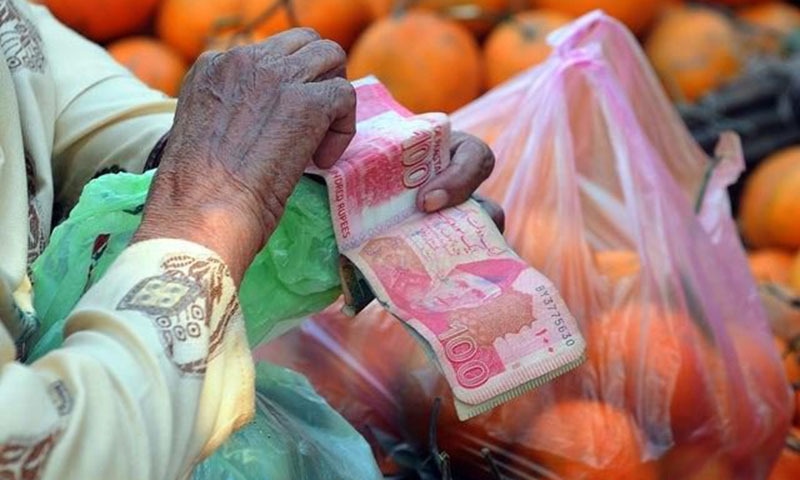By Staff Reporter
ISLAMABAD: Inflation climbed to 3.5% in May from a year earlier, outpacing government projections and and casting doubt on the impact of recent monetary easing.
The uptick, fueled by rising costs of food and non-food items, poses fresh challenges for policymakers balancing economic growth with price stability.
Data released by the Pakistan Bureau of Statistics (PBS) on Monday showed the Consumer Price Index (CPI) rose 3.5% year-on-year in May 2025, outpacing the finance ministry’s forecast of 1.5% to 2.0% for the month. On a month-on-month basis, inflation eased by 0.2%, following a 0.8% decline in April, indicating a slowdown in the pace of price relief.
The finance ministry, in its monthly economic report, had anticipated inflation would remain subdued in May before edging up to 3.0%-4.0% in June. The higher-than-expected May reading suggests price pressures are intensifying sooner than projected, complicating efforts to sustain a fragile recovery.
The PBS data revealed broad-based price increases across urban and rural areas. In urban centers, food prices surged, with chicken leading at 51.96%, followed by pulse moong at 31.13%, fresh fruits at 29.5%, and butter at 26.15%. Non-food items also contributed significantly, with motor vehicle tax soaring by 168.79%, personal effects rising 33.24%, and electrical appliances up 17.63%.
Rural areas faced similar pressures. Chicken prices jumped 46.05%, pulse moong 31.39%, and fresh fruits 31.13%. Among non-food items, motor vehicle tax increased by 126.61%, personal effects by 37.47%, and dental services by 24.74%.
On a month-on-month basis, urban inflation was driven by sharp rises in eggs (24.38%), chicken (8.63%), and condiments and spices (5.50%), alongside non-food items like cotton cloth (3.20%) and motor vehicles (1.86%). In rural regions, eggs rose 19.27%, fresh fruits 5.07%, and condiments and spices 4.91%, with non-food increases led by dental services (5.97%) and personal effects (4.16%).
The finance ministry’s cautious outlook had pegged inflation at 1.5%-2.0% for May, citing a moderating trend and subdued growth in Large-Scale Manufacturing (LSM). However, the 3.5% year-on-year increase underscores a disconnect between official forecasts and on-the-ground realities, raising questions about the accuracy of economic modeling amid volatile conditions.
Inflation has been a defining issue for Pakistan’s economy in recent years. The CPI hit a record high of 38% in May 2023, driven by external account shocks and domestic supply constraints. Since then, the rate has trended downward, but the latest data suggests the decline is neither steady nor assured.
The State Bank of Pakistan (SBP) has sought to bolster growth through monetary easing. Last month, the Monetary Policy Committee slashed the key interest rate by 100 basis points to 11%, the lowest since March 2022, when it stood at 9.75%.
This follows a series of reductions totaling 1,100 basis points since June, when the rate peaked at 22%. The central bank’s moves reflect a delicate balancing act, as it seeks to stimulate the economy while keeping inflationary risks in check.
Brokerage Topline Securities noted in a recent report that inflation during the first 11 months of fiscal year 2025 averaged 4.61%, a marked improvement from 24.52% in the same period of fiscal year 2024. While this signals progress, the May spike suggests underlying pressures remain unresolved.
Copyright © 2021 Independent Pakistan | All rights reserved




